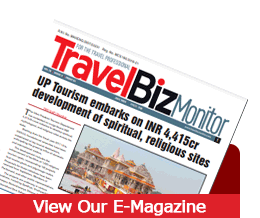By Ansoo Gupta, Founder, OneShoe Trust
Imagine the world is back to normal, all borders are open, there’s no restrictions on travel any longer and people have flocked back to spend their leisure time at beautiful beaches, verdant valleys, and misty mountains.
The whole travel ecosystem works in tandem to help these tourists get from their base to the destination they want to get to, creating value in the process for all the stakeholders. But when the tourists are standing at the beach with salty water splashing around their feet, do they stop to ponder who does the beach actually belong to? Or the green forest which is filling their lungs with crisp, clean air, who owns that forest? Who were the original inhabitants of that beautiful place? Are they still there and are they the beneficiaries in the value chain as well? Do they like having all kinds of tourists in their backyard – have they been a part of the development of that destination? Or, as in most cases, some section of people were able to reap the benefits while the natural habitat suffered pressures of rising tourism and slowly started losing the charm that bought tourists there in the first place? Does anyone stop to ask what does the local indigenous community think about what is happening to ‘their land’?
In recent times there’s been a renewed effort to take the local, original, inhabitants along in the whole process of developing a place as a tourist destination with Australia, USA and states like Kerala in India leading the way. Kerala’s responsible tourism mission states its objectives as “making better places for people to live in and better places for people to visit”, with first focus on residents and then on tourists. In the tenets of sustainable tourism development, benefits passing on to local community is an important one and many new travel businesses have sprung up based entirely on the premise of living like locals, doing the things that locals do and tourists merging seamlessly in the host environment.
A change in perspective is needed if these efforts are undertaken as an outsider, from a position of privilege. In the new order of business, we need to first respect the local community and the local environment. This respect and understanding is what leads to landmark decisions such as the Daintree in Australia – the world’s oldest tropical rainforest – returned to its Aboriginal custodians in September 2021. The Daintree, next to the Great Barrier Reef, is one of Australia’s top tourism drawcards and the Eastern Kuku Yalanji people will now manage the national park with Queensland’s state government. The deal also includes other Queensland national parks including Cedar Bay (Ngalba Bulal), Black Mountain (Kalkajaka) and Hope Islands – a combined area of over 160,000 hectares. “This agreement recognises their right to own and manage their Country, to protect their culture, and to share it with visitors as they become leaders in the tourism industry,” said the Australian Environment Minister Meaghan Scanlon in a statement.
Throughout the United States, land has been or is being transferred to tribes or is being co-managed with their help. In California, a land trust recently transferred 1,199 acres of redwood forest and prairie to the Esselen tribe, and in Maine, the Five Tribes of the Wabanaki Confederacy recently reacquired a 150-acre island with the help of land trusts. There is a burgeoning movement these days to repatriate some culturally and ecologically important lands back to their former owners, the Indigenous people and local communities who once lived there, and to otherwise accommodate their perspective and participation in the management of the land and its wildlife and plants.
It’s hard for outsiders to fathom how differently many Indigenous cultures perceive the landscape and wild creatures, and their relationship to it, but it is clear their lives have been deeply intertwined with the natural world in a very different way than non-Indigenous cultures. Any outsider, however well-meaning, or tourists can take a long time to appreciate the finer nuances of it.
Local host community is not just a buzzword in tourism. It is part of the much larger inclusivity and racial justice movement that is sweeping the globe. In that sense, responsible tourism, as a movement, is a harbinger of tomorrow’s world. We need to start seeing tourism as more than ‘atithi devo bhava’. We need to change focus and at natural destinations we need new slogans like ‘jal devo bhava’, ‘prithvi devo bhava’, ‘vaayu devo bhava’, ‘pashu-pakshi devo bhava’ etc.
Incidentally ‘atithidevo bhava’ mantra is from the Taittiriya Upanishad, Shikshavalli I.11.2, which says: matrudevo bhava, pitrudevo bhava, acharyadevo bhava, atithidevo bhava. It does put mother, father and the teacher before signifying the equal importance of one’s lineage and the guest.
This change in perspective is at the foundation of Responsible travel and Sustainable tourism development.
Ansoo Gupta is founder of OneShoe Trust which is a global advocacy platform for Responsible & Mindful Travels. Gupta a Science graduate in Physics and Mathematics with a post graduate in business management and a certification in Data Science & Machine Learning from HarvardX.
The views expressed in the column are of the author, and may or may not be endorsed by the publication.


